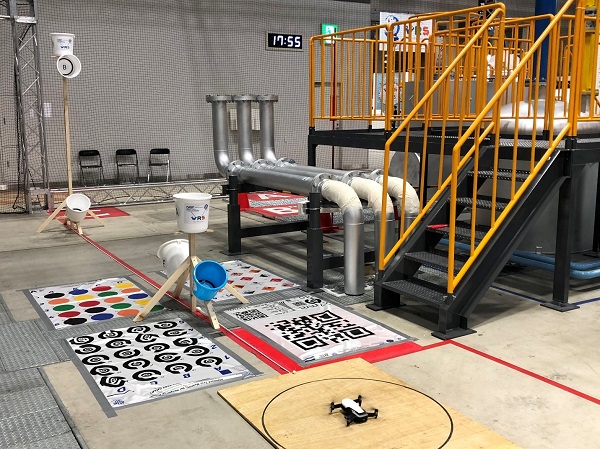
In 2011, a tsunami triggered by a magnitude 9.0 earthquake all but decimated the Pacific Coast of Tohoku, Japan, including the Fukushima Daiichi power plant. A catastrophic meltdown ensued. Many tons of nuclear fuel, boiled down to a radioactive lava, corroded the steel surrounding the facility’s three reactors. Today, the cleanup effort is still projected to take several decades.
Send in the robots

Initially, with such high radiation levels, the reactors were too hot for anyone to go in for cleanups. It was a matter of months before nuclear technicians could enter with their protective gear to assess damages and find where the fuel had gone.
The Japanese government assembled a host of its trusted private sector technology vendors to develop machines that would go where technicians could not. These included variations of aerial, aquatic, and ground systems equipped with cameras to survey the plant. It proved difficult, however, to navigate a completely unknown area remotely; the unpredictable, rubbly terrain stopped some robots in their tracks, and the radiation was extreme enough to disable the cameras on others.
Situations like these are why the Department of Homeland Security (DHS) Science and Technology Directorate (S&T) and the National Institute of Standards and Technology (NIST) developed standard test methods for robots, which the Japanese government is now beginning to apply directly to their Fukushima cleanup efforts.
The suite of S&T-NIST robot standards is sweeping the world, delivering insights to a wide range of responders and operators—although most notably in Japan. By testing their robots with these tools, operators can build on their understanding of what missions require of robots, and as a result, they will be able to maximize the true potential of these machines.
The test field
The Japanese government plans to open a $100 million research and development facility in 2020, called the Fukushima Test Field, dedicated to improving robotics aimed at the Fukushima cleanup effort. The facility will be centered on the various obstacles, terrains and other challenges—a total of 20 challenges for ground robots, and even more if you count air and water navigation—developed by S&T and NIST—that allow robots to be stretched to their limits, setting benchmarks for their usefulness in real-world circumstances.
“S&T-NIST is using the collaboration with the Japanese government to extend the test method suite toward power plant and infrastructure inspection tasks,” said Dr. Kai-Dee Chu, a Program Manager at S&T. “The adoption of our test methods in Japan is further evidence of the increasing relevance of robots. The facility will provide test grounds for robots, and training grounds for operators.”
Using the S&T-NIST standards, ground robots are tested for their combined search and rescue, decision support, information systems, maneuvering, dexterity and other functions that might help in a crisis.
These same standards continue to be adopted by law enforcement agencies and private corporations home and abroad. For Japan, the standards will support a much larger-scale, higher-impact mission with significant environmental and technological implications.
Why standards?

S&T-NIST robot standards made their first appearance at RoboCup in 2001. The standards have been applied in all events since, including in the summer of 2018, when the standards were used to evaluate contestants involved in the RoboCup Rescue, an entire category supporting first responder needs. Participants in the 2018 event were evaluated for their maneuverability and sensing capabilities.
More recently, the standards were used at the World Robot Summit in Tokyo, where NIST’s Adam Jacoff was present to observe different robots being evaluated for their efficacy in exactly the same way they will be tested and evaluated at Japan’s new facility. Other adopters today include the Federal Emergency Management Agency, Canada’s Police College in Ontario, and the North Atlantic Treaty Organization, who have all started using different apparatuses to train bomb technicians and other operators.
“They set minimum acceptable levels of proficiency for bomb technicians across Canada,” said Jacoff, “like getting a driver’s license for emergency response robots. The test methods focus training and measure basic maneuvering and dexterity along with more operationally relevant tasks such as accessing buildings.”
The test methods that will be used at Fukushima are the same S&T-NIST robot standards used in RoboCup Rescue 2017 in Nagoya, Japan.
With standards applied, a broad range of users can rest assured their response robots will be up to the task when the time comes.

